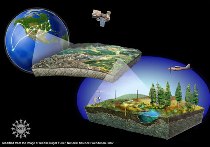Investigating the footprint of climate change on phenology and ecological interactions in north-central North America
Author(s): Jeremy Davis
University of Washington Tacoma
1997 total view(s), 307 download(s)
Bundle(ZIP | 235 KB)
- License terms
Description
The module and supplements were implemented at the University of Washington Tacoma by Jeremy Michael Davis.
- Course: TESC 332. Conservation Biology in Practice
- Course Level: This course is currently being transitioned to the 400 level. Students are expected to be able to work with Excel with minimal instruction. Most were familiar with the basic ideas of regression analyses, but had only completed them with a full set of instructions.
- Instructional Setting: Lab & Lecture
- Implementation Timeframe: Three 2.5 hour lab periods were used to implement this lab. The middle session is optional.
Notes
Reorganization:
My plan for this session was to reorganize it into a 3 week module:
Week 1) Climate Change
Week 2) Collecting Phenology Data
Week 3) Analyzing Phenology Data
Day 1) Climate Data.
For this day, I simply cut out all of the phenology components of the original module. I then added two additional components at the end of the worksheet.
Having students locate, download, and analyze the most up-to-date Ohio data from NOAA
Having students repeat this process at a geographic region of interest for homework.
Day 2) Collecting Phenology Data.
The PLAN was to set up a “phenology walk” through the center of campus using the “Nature’s Notebook” app/website from the National Phenology Network. I had hoped to have a “group site” set up with the NPN by the time this lab came around, but that didn’t happen, so I was unprepared for this lab (you’ll notice there is not worksheet!). The students and I did walk through campus and chose plants for which we would collect phenology data over the next few weeks. It took an additional 3 weeks to get the group site set up, and by that time we had moved on. Nonetheless, the students did become familiar with NPN website at this time, and had some sense of how citizen science could be utilized to collect phenology data.
Day 3) Phenology and Climate Change
Here I implemented the remainder of the original module. I also had students develop their own questions to be asked using NPN data. While the data set from NPN is much smaller than the data provided with the module, the students appreciated being able to ask questions about regions and organisms they cared about.
Cite this work
Researchers should cite this work as follows:
- Davis, J. (2017). Investigating the footprint of climate change on phenology and ecological interactions in north-central North America. ESA Data Discovery FMN (2017), QUBES Educational Resources. doi:10.25334/Q4Z595
